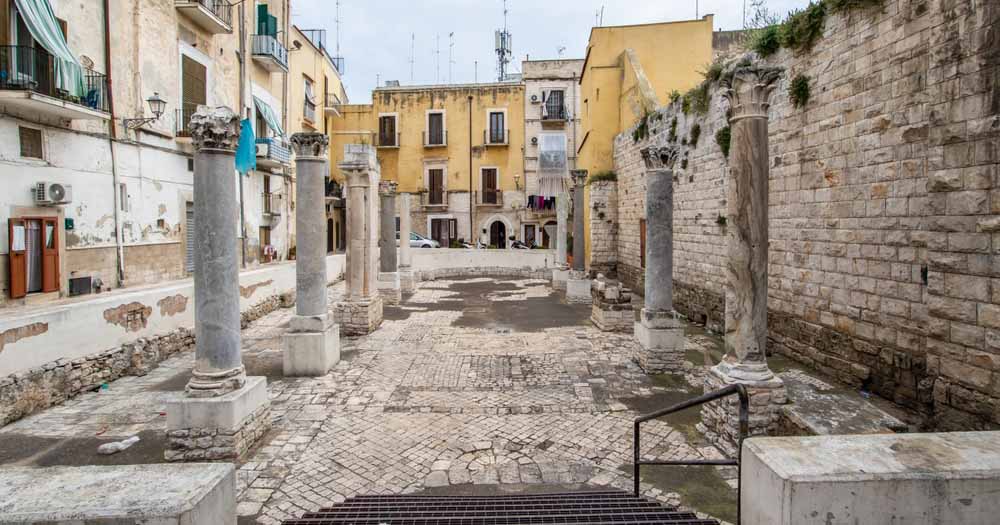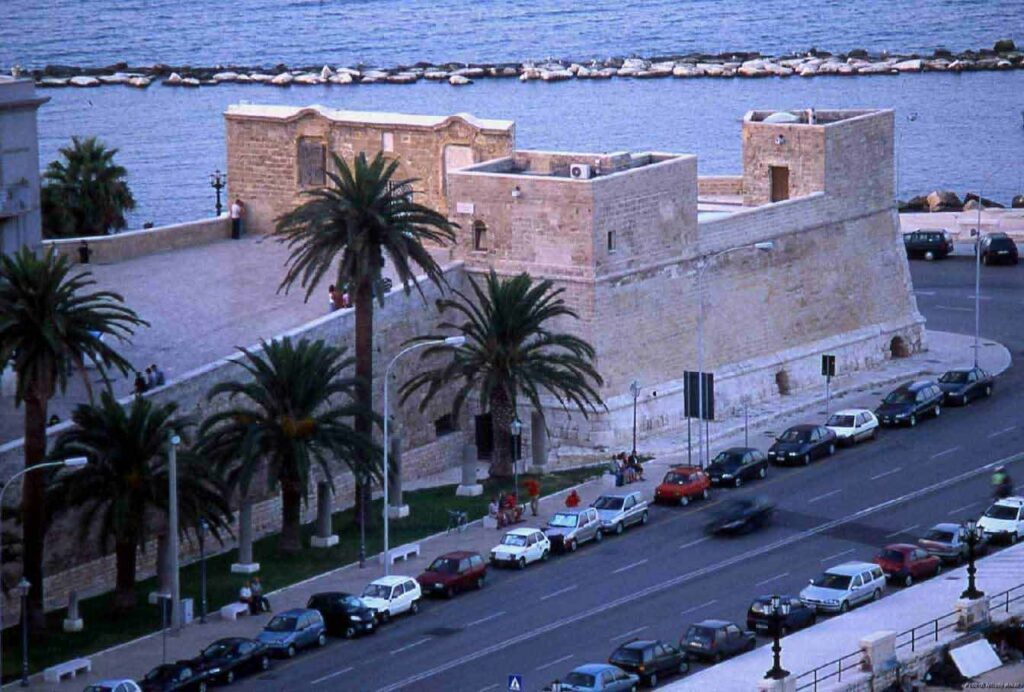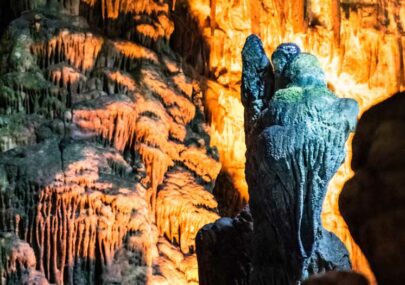
Trulli and surroundings: A journey through Bari vecchia
Tourists visiting Puglia often find their newborn curiosity piqued by the region’s rich history and vibrant culture. The allure of exploring ancient trulli, tasting local delicacies, and wandering through the historic streets of Bari Vecchia, transforms their journey into an unforgettable adventure. This curiosity leads them to discover hidden gems and immerse themselves in the authentic experiences that Puglia has to offer.
Bari Vecchia is a magical and captivating place where history and tradition blend to create an incredibly evocative atmosphere. It is the ancient district of Bari, known as the San Nicola district, located within the old city walls and the peninsula enclosed between the city’s two ports. The name “Bari Vecchia” (Old Bari) has been used since the 19th century to distinguish it from the newer part of the city, which was constructed starting in 1813 under Joachim Murat.
The Old City boasts a Byzantine-era urban layout, with buildings dating from the 11th to the 17th century, with some exceptions. Here, amidst alleys and monuments, you can discover 40 churches and chapels and 120 votive shrines. Must-see sites include the Basilica of San Nicola, which houses the relics of the city’s patron saint, and the Basilica Cattedrale Metropolitana Primaziale di San Sabino, a magnificent example of Byzantine-era Romanesque-Pugliese architecture.
In the historic center, you’ll find numerous monuments, including the famous Norman-Swabian Castle, with its main core built by Frederick II of Swabia on earlier Byzantine fortifications.
Bari Vecchia was completely redeveloped in 2005 and is now the vibrant heart of Bari’s nightlife.
The Basilica of San Nicola in Bari
Contents

Bari Vecchia is an important pilgrimage site as it houses the relics of Saint Nicholas in the Basilica dedicated to his widely venerated figure, which is just one, perhaps the most important, of the 25 magnificent churches in Bari Vecchia.
The Basilica of San Nicola is open continuously from 7 am to 9 pm, allowing visitors from all over the world to appreciate the ecumenical character of the Christian religion and potentially participate in two different rites: Roman Catholic and Greek Orthodox.
Before entering, it is advisable to stand in the center of the Piazza to admire its simple majesty, the Romanesque-Pugliese architecture, and the asymmetrical form redesigned around 1100 on the remains of the Palazzio del Catalano (the Greek-Byzantine governor of Southern Italy).
Inside, entrance is free, and you can discover numerous stories related to the church and the icon of Saint Nicholas, such as his life of charity lived around 300 AD as the Bishop of Myra – present-day Turkey, the translation of his relics stolen in 1087 by 62 sailors, his Holy Manna, and the patronal feast dedicated to him.
Basilica Cattedrale Metropolitana Primaziale di San Sabino

The Basilica Cattedrale Metropolitana Primaziale di San Sabino, often referred to as the Cathedral of San Sabino, stands as a major religious and historical landmark in Bari, Italy. Originating in the 11th century, it was constructed on the site of a previous Byzantine church honoring Saint Sabinus, the 4th-century bishop of Canosa di Puglia.
The cathedral features a blend of architectural styles, including Romanesque, Gothic, and Baroque elements. Its impressive façade is decorated with intricate stone carvings and sculptures, while the interior contains a nave and side aisles supported by columns with sculpted capitals.
The cathedral preserves the relics of Saint Sabinus in a silver reliquary located in the crypt, drawing pilgrims and visitors who wish to venerate the saint and obtain spiritual blessings. Over its history, the Cathedral of San Sabino has been adorned with numerous artworks, including frescoes, paintings, and sculptures depicting biblical scenes, saints, and religious motifs, enhancing the spiritual and aesthetic experience for visitors.
As one of Bari’s foremost churches, the Cathedral of San Sabino holds significant cultural and religious importance for the local community, acting as the seat of the Archbishop of Bari-Bitonto and a central point for religious ceremonies, celebrations, and events.
The Muraglia

The Muraglia is a high fortification surrounding part of the historic center from Piazza del Ferrarese to the Santa Scolastica Museum. Stretching from Piazza del Ferrarese to the former Monastery of Santa Scolastica, is one of the most significant examples of medieval coastal defense, offering visitors a unique perspective on the city and the breathtaking panorama of Bari’s waterfront.
The currently visible walls are actually only a small part of the original enclosure, in fact, in the 19th century, two-thirds of the Muraglia were demolished, whereas it once completely surrounded the old city. Moreover, the fortification, in addition to being bordered by the Adriatic Sea, was equipped with four bastions at its corners, of which only the Santa Scolastica and Fortino di Sant’Antonio Abate bastions have survived.
Fortino di Sant’Antonio Abbate

Located on the Lungomare Imperatore Augusto, across from the old port (now called Molo Sant’Antonio), the Fortino di Sant’Antonio Abate, represents the highest point of the old city, offering a view of the medieval wall’s layout (to the left) bordered by the Lungomare Imperatore Augusto, and the waterfront profile from the early 20th century (to the right). Its origins trace back to 1071, when the Norman Robert Guiscard, during the siege of Bari, built a stone tower to guard the port.
Such structures, with their foundations on cliffs, were in direct contact with the sea, and were the most vulnerable points of the entire urban defensive system, often dedicated to thaumaturges or saints for protection.
The fort was dedicated to Saint Anthony Abbot, as remnants of a chapel that likely housed his wooden statue were found there (a popular saint for his healing powers against contagious diseases and protection of domestic animals). Remains of an ancient 11th-12th century church (probably “San Nicola sul porto”) were also discovered in the walls.
The fort required several consolidation interventions. In the 15th century, it was completely rebuilt by Isabella of Aragon and the Universitas of Bari; in the 16th century, it was given its fortified appearance, which, after a long period of abandonment, was recently restored by the Municipality and the Superintendency of Cultural Heritage. Today, access is possible from Via Venezia to the first-floor rooms and from the Lungomare Imperatore Augusto to the ground-floor rooms, used by the Municipality for exhibitions, debates, and public meetings.
Il Castello Svevo

The Castle of Bari, known as the Castello Svevo, is the most evident example of the city’s grandeur, which has always seen wealth and prosperity as central and constant aspects of its identity. This site witnessed Lombard rule, during which the city was a capital, and is also an heir to Norman history and the relics of Saint Nicholas, preserved here. Under Byzantine rule, Bari experienced a period of great splendor, during which it was expanded and fortified, as evidenced by the city walls.
The Normans invaded and partially destroyed Bari in 1156, led by William the Bad, but met fierce resistance from the locals. Frederick II later rebuilt the castle, transforming it into a residence. His symbol, an eagle clutching its prey, adorns the archway of the portal, and local artists decorated the capitals in the entrance hall.
The castle’s elements reflect the city, serving as both a fortress and town center. Unlike typical hilltop castles, it stands on the city’s periphery, overseeing and defending Bari. Tradition links Frederick II to Francis of Assisi, who was tested by a woman commissioned by Frederick.
The castle was later fortified by the Spanish and became a cultural hub under Isabella of Aragon and Bona Sforza. Despite its central role, locals often saw the castle as a threat rather than a protector. Today, the Castello Svevo, with its Byzantine-Norman origins and later modifications, holds significant historical and cultural value. Visitors can access it via a bridge over the moat on the south side, while the north side faces the sea. The lower level features a Renaissance courtyard and a hall with the city’s Gypsotheca and archive, while the upper floor houses the Superintendency for Puglia’s heritage.
Strada delle Orecchiette

It is here, walking through the historic maze of alleyways of Bari Vecchia, that you find the street of handmade pasta, the “Strada delle orecchiette.” Just head to Arco Basso, and you’ll be immediately immersed in an invasion of smells, colors, and sounds that narrate the daily life of Bari and its inhabitants. Skilled hand housewives, the ‘donne delle orecchiette, sit at the doorsteps of their low houses, at work on flour-dusted tables shaping their worldwide famous orecchiette. Armed with practical tips and a welcoming smile, these “women of orecchiette” charm the many tourists drawn to this street by the enticing aroma of flour, making them a beloved part of local folklore.



Leave a Reply